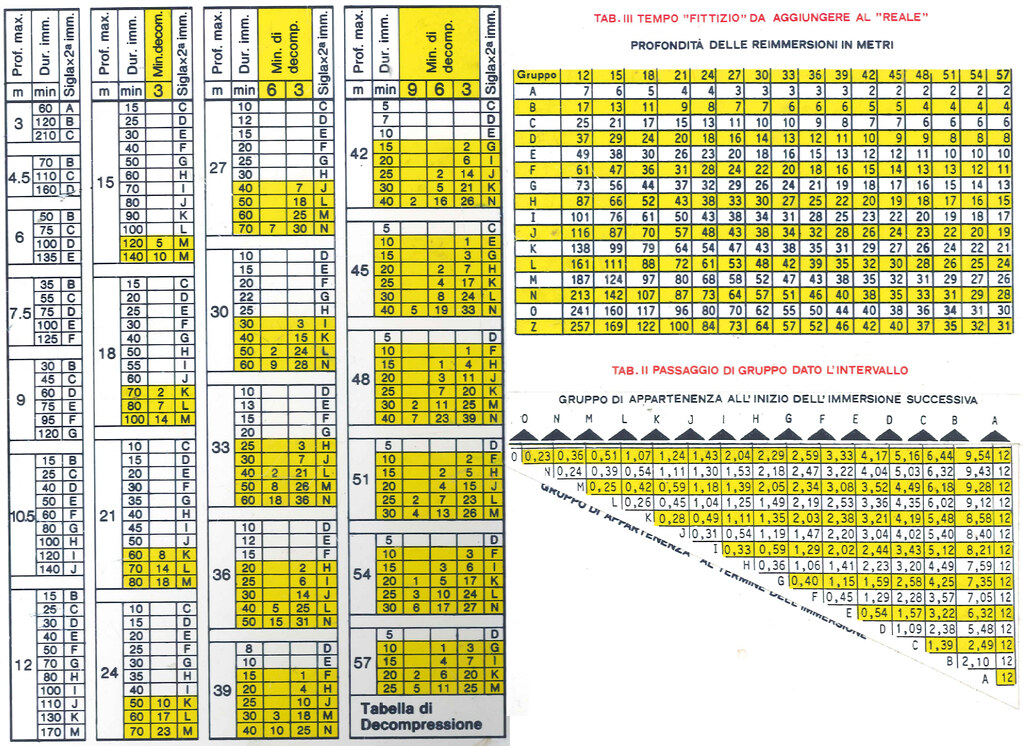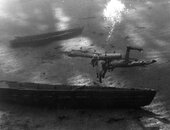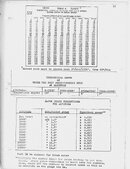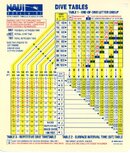Just to clarify, at least for myself, my pony/buddy bottle is up under my armpit. Since my arms are crossed in front or under or out front holding my camera the bottle is tucked up in the pocket created by my shoulder and armpit and therefore is not particularly in the way or creating additional drag as it is behind my shhoulder. I guess the valve area does hang down a tiny bit. When I first started slinging a bottle it was down in front as you think but because I carry a camera I cannot have my bottle and camera occupying the same space at the same time and the camera is priority one. So I relocated the rear clip, shortened the leash and moved the attach point from my left waist D ring to the rear of my plate and added a bungee in the front plus a shorter leash to pull the valve end up into my shoulder. And I am still refining the slinging.I do have a few remarks about slinging a pony bottle in front of your, or even to one’s side. I have now spent decades researching underwater swimming techniques, and find that slung or tied bottles create quite a drag on the diver underwater. Where you dive that may not be important, but in high current rivers it is. Because of that aspect, I will probably never use that technique. Having that pony bottle in front also inhibits grabbing onto bottom river rocks, and creates a snagging hazard.
You are using an out of date browser. It may not display this or other websites correctly.
You should upgrade or use an alternative browser.
You should upgrade or use an alternative browser.
No Octo while diving with redundant air supply
- Thread starter rfwoodvt
- Start date
Please register or login
Welcome to ScubaBoard, the world's largest scuba diving community. Registration is not required to read the forums, but we encourage you to join. Joining has its benefits and enables you to participate in the discussions.
Benefits of registering include
- Ability to post and comment on topics and discussions.
- A Free photo gallery to share your dive photos with the world.
- You can make this box go away
While I agree with most of your post, this idea that "surfacing is simple" bothers me slightly.We didn’t have that problem when there was only one regulator, with one second stage. If something happened to it, you simply surfaced.
SeaRat
Since my first course in 1975, I was taught that any problem should be solved staying down, not surfacing.
That is the very last resort, and if forced to surface, one had done several errors.
I also started diving with a single reg, and did this for at least 4 years.
Then, in 1979, while penetrating a narrow cavern for catching a lobster, I suffered a problem due to the valve closing while rattling against rocks.
I was suddenly OOA while still trapped inside the hole, with just my fins outside. Luckily my girlfriend perceived I was in trouble, pulled me outside the hole grabbing my fins, and provided air to me by sharing her single reg.
After reaching the deco stop at 6m (we were at 42m and with some deco obligation) I analysed what happened, understanding that the problem was the valve, opened it and we had all my air available for performing a correct deco.
If I was solo, the situation could have evolved quite badly, and "simply surfacing" could have been impossible or very dangerous.
After that accident I immediately purchased a second complete reg for me and my GF. Of course identical to our primary regs (SP MK5+109).
We are stll using those 4 regs!
All tanks here always had two valves, so not using the second valve revelead to be a stupid choice
And this also for buddy diving (I do not like solo).
So yes, both you and me survived using a single reg. Someone else did not survive, indeed.
And we all should agree that using a single reg, even if equipped with an octo, is not 100% safe: only two fully independent regs on two separate valves provide the redundancy required when diving deep, with deco, in caverns, or solo (which I do not like).
Simply surfacing is not always possible. But as a non-technical level solo diver, we should not be putting ourselves inside holes or into deco or into places and conditions where direct to surface is not possible. But, still, reality is that direct to surface is just not always possible.
@Angelo Farina,
42 meters is 137.795 feet, or on tables 140 feet. My NAUI Dive Tables for sport diving only go down to 130 feet. And, at 130 feet, the maximum dive time was 8 minutes, with a 5 minute stop required at 15 feet. Also, you were in an overhead environment. Both these facts disqualify this as a sport dive. So your measures were justified for a technical dive. "...'simply surfacing' could have been impossible or very dangerous..." Yes, which is why it is outside the sport diving realm. I did not have that problem with my diving in Oregon rivers and lakes. Even in Clear Lake (see the photo below), we were very careful not to exceed the NDL, and stay away from the "knife edge" of these limits, and for Clear Lake (4,000 feet altitude) used the Cross Tables to compensate and stay away from a decompression obligation.
SeaRat
42 meters is 137.795 feet, or on tables 140 feet. My NAUI Dive Tables for sport diving only go down to 130 feet. And, at 130 feet, the maximum dive time was 8 minutes, with a 5 minute stop required at 15 feet. Also, you were in an overhead environment. Both these facts disqualify this as a sport dive. So your measures were justified for a technical dive. "...'simply surfacing' could have been impossible or very dangerous..." Yes, which is why it is outside the sport diving realm. I did not have that problem with my diving in Oregon rivers and lakes. Even in Clear Lake (see the photo below), we were very careful not to exceed the NDL, and stay away from the "knife edge" of these limits, and for Clear Lake (4,000 feet altitude) used the Cross Tables to compensate and stay away from a decompression obligation.
SeaRat
Attachments
At the time we were using US Navy tables, as modified by CMAS (so total diving time included ascent at 10 m/min).@Angelo Farina,
42 meters is 137.795 feet, or on tables 140 feet. My NAUI Dive Tables for sport diving only go down to 130 feet. And, at 130 feet, the maximum dive time was 8 minutes, with a 5 minute stop required at 15 feet. Also, you were in an overhead environment. Both these facts disqualify this as a sport dive. So your measures were justified for a technical dive. "...'simply surfacing' could have been impossible or very dangerous..." Yes, which is why it is outside the sport diving realm. I did not have that problem with my diving in Oregon rivers and lakes. Even in Clear Lake (see the photo below), we were very careful not to exceed the NDL, and stay away from the "knife edge" of these limits, and for Clear Lake (4,000 feet altitude) used the Cross Tables to compensate and stay away from a decompression obligation.
SeaRat
At 42m we had a total planned diving time up to 25 min, with two deco stops: 2 min at 6m, 14 min at 3m.
and in case of some delay, the next entry on the table was 30 min, requiring 5 min at 6m and 21 min at 3m.
A bit too long for my taste, but still feasible with the amount of air we were carrying (4000 liters each).
We also had an additional emergency 10 liters tank hanging below our boat at 6m. I never needed to use it, indeed...
Here recreational diving is up to 50m and with deco on back gas, so this was a normal recreational dive, for us.
We were trained for it, but not properly equipped, as the experience did show: we were using twin tanks, BCD, reserve, SPG, but not a full secondary regulator.
Ok, I should not have been following the lobster when it retracted inside the hole, it was a stupid decision: but both my feet were still outside, it was not a cave, just one of the many holes typical of Mediterranean coast (Isola d'Elba).
Some are pass-through, some are closed, as this one.
Water was warm, cristal-clear (from 40m I was seeing our small boat above us), no current, no waves.
Absolutely benign conditions, this was not a risky technical dive.
Doing a couple of short deco stops was the rule, and we always considered a dive planned and executed with a short deco to be safer than a dive planned "on the edge" of NDL, which can result in an unplanned deco dive at the minimal delay.
@Angelo Farina,
Yes, your calculations are correct for the U.S. Navy Dive Tables from March 1970. However, this is a planned decompression dive, requiring stops of 2 minutes at 10 feet (6 meters) and 14 minutes at 10 feet (3 meters). A NDL dive to this depth would be 10 minutes using these tables. You were technical diving, or as we used to say, "decompression diving," not sport diving, under NAUI terms at that time. My discussion of solo diving above was about using the sport diving criterion; once into decompression diving, it's a whole different aspect of the sport. Here are the altitude diving corrections we used for Clear Lake.
SeaRat
Yes, your calculations are correct for the U.S. Navy Dive Tables from March 1970. However, this is a planned decompression dive, requiring stops of 2 minutes at 10 feet (6 meters) and 14 minutes at 10 feet (3 meters). A NDL dive to this depth would be 10 minutes using these tables. You were technical diving, or as we used to say, "decompression diving," not sport diving, under NAUI terms at that time. My discussion of solo diving above was about using the sport diving criterion; once into decompression diving, it's a whole different aspect of the sport. Here are the altitude diving corrections we used for Clear Lake.
SeaRat
Attachments
Here the tables we were using at the time. According to CMAS, everything listed on these tables was fully recreational (or "sport")!@Angelo Farina,
Yes, your calculations are correct for the U.S. Navy Dive Tables from March 1970. However, this is a planned decompression dive, requiring stops of 2 minutes at 10 feet (6 meters) and 14 minutes at 10 feet (3 meters). A NDL dive to this depth would be 10 minutes using these tables. You were technical diving, or as we used to say, "decompression diving," not sport diving, under NAUI terms at that time. My discussion of solo diving above was about using the sport diving criterion; once into decompression diving, it's a whole different aspect of the sport. Here are the altitude diving corrections we used for Clear Lake.
SeaRat

Here in Italy, CMAS was taught by FIPSAS, which was a bit more restrictive, limiting max depth to 50m (51, in practice). In other countries (France, UK) they were allowed to also use the last two depths in the above table (54 and 57 meters).
As said, the last "white" row before the yellow deco area (the NDL) was considered the most dangerous, as the divers think to avoid deco, so they are not equipped and prepared for it, but any inconvenience can cause a delay, entering the yellow deco area without enough gas.
Instead we were always taught to plan our dive in the second yellow row, keeping the third one as a safety plan.
Our dive was a bit stretched, as it was planned already on the third yellow line, and considering the 4th one as the safety plan. But we were young and stupid!
Of course it was a buddy dive. I agree that such a dive should never be done as solo.
@Angelo Farina,
The CMAS and FIPSAS standards were different from the NAUI standards that we taught in the USA. Here’s what NAUI said about their specialty Deep Diving Course:
Your conditions were much different in that nice, warm water than what most of us dived in the USA. Below are the NAUI Dive Tables from the 1989.
____________________
To get somewhat back on track with this thread, I don’t think the OP needs the octopus regulator with the setup described.
SeaRat
The CMAS and FIPSAS standards were different from the NAUI standards that we taught in the USA. Here’s what NAUI said about their specialty Deep Diving Course:
The NAUI Deep Diving Speecialty Course also required 3 open water dives. This comes from my NAUI Blue Book for instructors, first written in 1969 and updated in 1975. I have my later NAUI Instructor’s manual too.b) Deep Diving
This course is to provide the diver with the needed knowledge and skills to safely make deep dives while understanding and avoidiing decompression. Deep diving is defined as dives made between 60 and 130 feet. Dives are not to be conducted beyond 130 feet.
Your conditions were much different in that nice, warm water than what most of us dived in the USA. Below are the NAUI Dive Tables from the 1989.
____________________
To get somewhat back on track with this thread, I don’t think the OP needs the octopus regulator with the setup described.
SeaRat
Attachments
Similar threads
- Replies
- 4
- Views
- 591
- Replies
- 57
- Views
- 3,988
- Replies
- 42
- Views
- 5,057
- Replies
- 5
- Views
- 685






